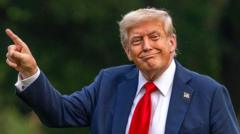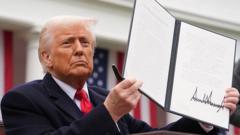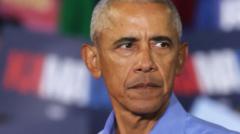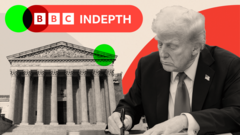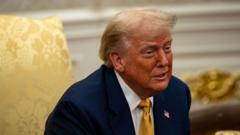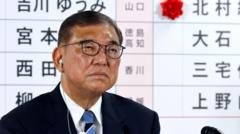The US and Japan have entered into a landmark trade agreement, with Japan committing $550 billion in investments and reducing tariffs on US imports. The deal highlights Japan's willingness to engage in economic reforms and comes amidst political pressures for Japanese leader Shigeru Ishiba.
Landmark Trade Agreement Between the US and Japan: A New Era for Economic Relations

Landmark Trade Agreement Between the US and Japan: A New Era for Economic Relations
President Trump announces a significant trade deal with Japan, including a $550 billion investment and lower tariffs on American goods.
In a pivotal announcement, President Donald Trump revealed that the United States has forged a substantial trade deal with Japan, one of its largest economic allies. This agreement entails a remarkable investment of $550 billion from Japan into the US economy, alongside a reduction in tariffs on various American goods, particularly in the automotive and agricultural sectors.
At a White House event, Trump proudly declared, "I just signed the largest trade deal in history, a historic agreement for Japan." He noted that the agreement will see tariffs on Japanese vehicles and auto parts drop to 15%, a decrease from the previously proposed 25%. This new arrangement allows Japan to bolster its economic ties with the US while improving market access for American products, including automobiles and agricultural goods.
Japanese Prime Minister Shigeru Ishiba expressed his satisfaction with the deal, highlighting it as a major step forward. He stated that Japan is now the first country to reduce automobile tariffs without imposing quantity restrictions. However, the agreement does not include any tariff reductions on Japanese exports to the US, leaving room for further negotiation.
Experts view this deal as a vital compromise, especially for Japan, which will help revitalize US manufacturing and create job opportunities as part of Trump's broader economic agenda. Shigeto Nagai from Oxford Economics emphasized the importance of this investment in restoring American manufacturing.
The timeline leading up to this agreement was marked by heightened tensions, as Trump had previously threatened a 25% tariff on Japanese exports unless a deal was reached by August 1. The recent negotiations unfolded in the wake of market instability, leading to a 90-day pause on proposed tariffs allowing both parties time to come to the negotiating table.
On the Japanese side, the news of the deal led to optimism on the Nikkei 225 stock index, which saw significant gains—particularly among automotive giants like Toyota, Nissan, and Honda. This deal comes as Ishiba is under pressure from his party and citizens following the recent loss of majority control in Japan's parliament.
With these developments, the US and Japan have initiated a new chapter of economic cooperation amidst the complexities of global trade dynamics.

